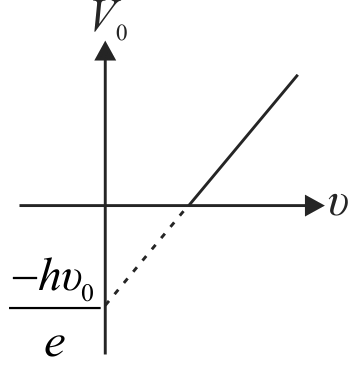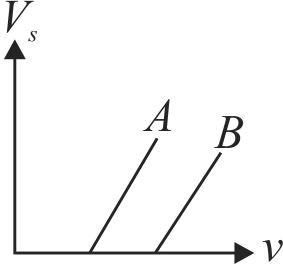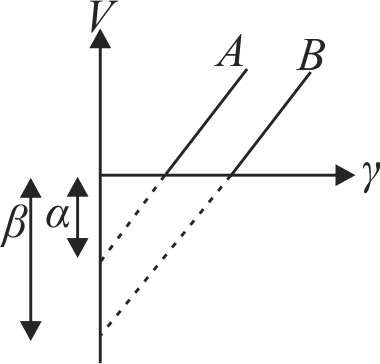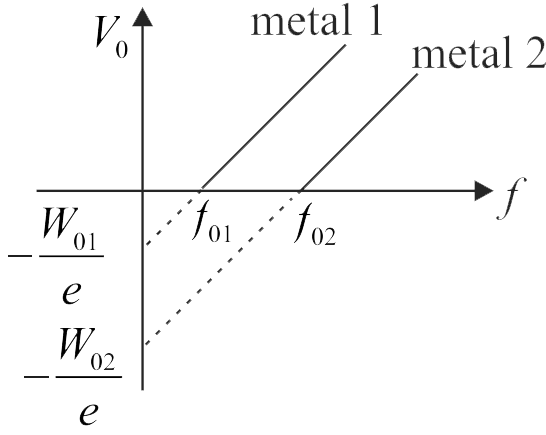357648 A metallic surface is illuminated with radiation of wavelength \(\lambda\), the stopping potential is \(V_{0}\). If the same surface is illuminated with radiation of wavelength \(2 \lambda\), the stopping potential becomes \(\dfrac{V_{0}}{4}\). The threshold wavelength for this metallic surface will be
357652
Assertion :
If work function of a material increases by some mechanism, it requires greater energy to excite the electrons from its surface.
Reason :
A plot of stopping potential \(\left(\mathrm{V}_{0}\right)\) versus frequency \((f)\) for different metals, has greater slope for metals with greater work functions.
357648 A metallic surface is illuminated with radiation of wavelength \(\lambda\), the stopping potential is \(V_{0}\). If the same surface is illuminated with radiation of wavelength \(2 \lambda\), the stopping potential becomes \(\dfrac{V_{0}}{4}\). The threshold wavelength for this metallic surface will be
357652
Assertion :
If work function of a material increases by some mechanism, it requires greater energy to excite the electrons from its surface.
Reason :
A plot of stopping potential \(\left(\mathrm{V}_{0}\right)\) versus frequency \((f)\) for different metals, has greater slope for metals with greater work functions.
357648 A metallic surface is illuminated with radiation of wavelength \(\lambda\), the stopping potential is \(V_{0}\). If the same surface is illuminated with radiation of wavelength \(2 \lambda\), the stopping potential becomes \(\dfrac{V_{0}}{4}\). The threshold wavelength for this metallic surface will be
357652
Assertion :
If work function of a material increases by some mechanism, it requires greater energy to excite the electrons from its surface.
Reason :
A plot of stopping potential \(\left(\mathrm{V}_{0}\right)\) versus frequency \((f)\) for different metals, has greater slope for metals with greater work functions.
357648 A metallic surface is illuminated with radiation of wavelength \(\lambda\), the stopping potential is \(V_{0}\). If the same surface is illuminated with radiation of wavelength \(2 \lambda\), the stopping potential becomes \(\dfrac{V_{0}}{4}\). The threshold wavelength for this metallic surface will be
357652
Assertion :
If work function of a material increases by some mechanism, it requires greater energy to excite the electrons from its surface.
Reason :
A plot of stopping potential \(\left(\mathrm{V}_{0}\right)\) versus frequency \((f)\) for different metals, has greater slope for metals with greater work functions.
357648 A metallic surface is illuminated with radiation of wavelength \(\lambda\), the stopping potential is \(V_{0}\). If the same surface is illuminated with radiation of wavelength \(2 \lambda\), the stopping potential becomes \(\dfrac{V_{0}}{4}\). The threshold wavelength for this metallic surface will be
357652
Assertion :
If work function of a material increases by some mechanism, it requires greater energy to excite the electrons from its surface.
Reason :
A plot of stopping potential \(\left(\mathrm{V}_{0}\right)\) versus frequency \((f)\) for different metals, has greater slope for metals with greater work functions.





